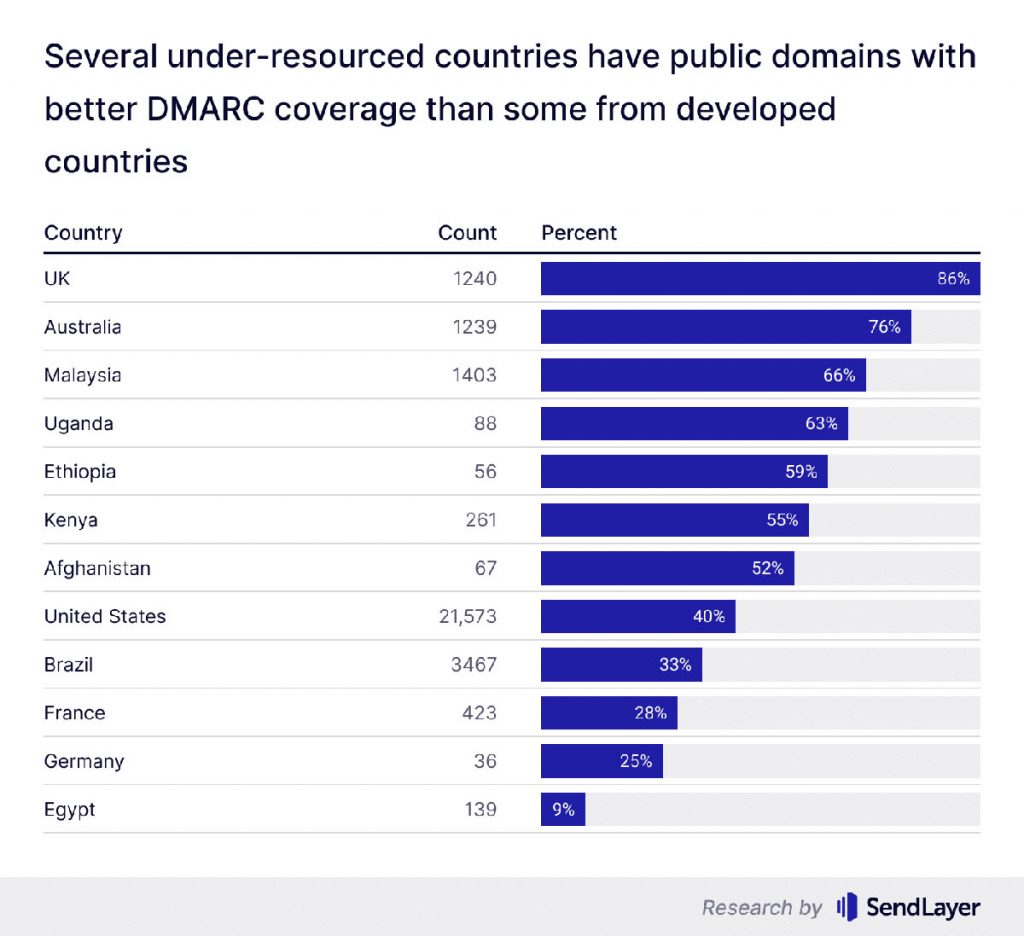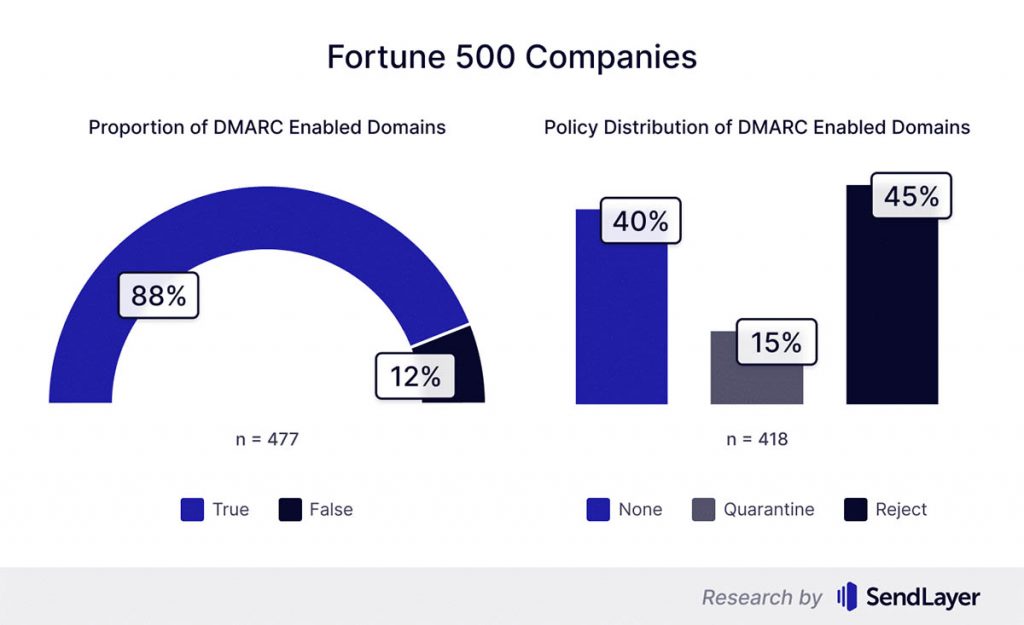Study Reveals Global Trends in Email Security Protocols

Introduction:
In today’s digital age, cybercriminals continue to employ sophisticated tactics to exploit vulnerabilities and deceive unsuspecting individuals and organizations. Among these tactics, phishing attacks remain a prevalent and menacing threat. Cybercriminals can easily impersonate trusted entities, like banks, corporations, or even government agencies, to deceive individuals into falling prey to their schemes. The consequences of such attacks can be severe, leading to financial loss, data breaches, and reputational damage. To combat this growing menace, email security protocols like DMARC (Domain-based Message Authentication, Reporting, and Conformance) have emerged as a potent defense mechanism.
In a recent study conducted by cybersecurity researchers at SendLayer, the state of email security was evaluated across various sectors and regions. The findings were alarming, shedding light on the inadequate implementation of DMARC, leaving millions vulnerable to phishing attacks. This article will delve into the key findings of the research, highlighting the sectors and regions with the most significant gaps in email security and emphasizing the need for improved protection measures.
Key Findings: An Overview of the State of Email Security Worldwide

- Banking Domains Remain Vulnerable:
The study revealed that even sensitive sectors, such as banking, exhibit dangerously low levels of DMARC adoption. 41% of the banking institutions worldwide lacked DMARC protocols, leaving countless customers exposed to financial fraud carried out through fake emails. While the banking industry had higher DMARC coverage compared to other sectors, it still falls far from adequate protection. With scammers easily imitating unprotected banking domains, customers are at risk of falling victim to fraudulent money transfers.
Other sectors displayed even worse DMARC coverage, with the graphic design industry at the bottom, where a staggering 91% of domains lacked DMARC protection. It is essential for organizations, regardless of their sector, to prioritize email security to safeguard both their reputation and their clients’ trust.
- Global Companies Negligent in Domain Protection:
Among the largest global companies outside the Fortune 500, 66% of domains had no DMARC protocols in place. Even among companies that had DMARC enabled, over half implemented a ‘none’ policy, rendering them vulnerable to phishing attacks carried out in their name. These findings underscore the lack of commitment to robust email security measures, which can lead to severe reputational and financial consequences for companies.
- Government Domains Dangerously Susceptible Worldwide:
The study highlighted the poor commitment of government agencies worldwide to implement DMARC protocols. 65% of government domains from 198 countries had no DMARC protection, making phishing attacks impersonating government entities particularly dangerous. With scammers leveraging the trust associated with government agencies, individuals are more likely to fall victim to these deceptive emails.
Even among government domains with DMARC protocols, a significant 36% were using a ‘none’ policy, further exposing citizens to email fraud. These findings emphasize the need for governments to establish strong official policies mandating DMARC adoption to combat phishing and protect their citizens.

- Fortune 500 Companies Show Mixed Commitment:
The Fortune 500, despite boasting the highest collective DMARC coverage at 88%, still had 12% of domains with no DMARC protection. This leaves a significant number of customers vulnerable to phishing attacks. Moreover, 40% of F500 companies with DMARC records used the ‘none’ policy, which allows hackers to impersonate their domains and send phishing emails to customers.

- Oceania Companies Lead the Way:
In terms of regional DMARC adoption, companies from Oceania exhibited the most impressive coverage rates, followed by Europe, the Americas, Asia, and Africa. Countries like Denmark and the US had the highest DMARC coverage among individual nations. However, the overall adoption rates, even in leading nations, hovered around 59%, leaving ample room for improvement.
Conclusion: Safeguarding the Future of Email Security
Phishing attacks have persisted as one of the most significant cybersecurity threats globally, causing considerable harm to individuals, organizations, and governments alike. The study’s findings expose the alarming gaps in DMARC adoption, leaving millions susceptible to email fraud. Implementing DMARC and other robust email security measures should be a top priority for institutions across all sectors and regions.
As we navigate the ever-evolving digital landscape, embracing comprehensive email security measures becomes a shared responsibility. By prioritizing email security, we can collectively safeguard the future of digital communication and protect individuals and organizations from falling victim to phishing attacks.